NVIDIA Doesn’t Have a Communication Problem—It Has a Timeline Problem [Guest]
Inside the misalignment between NVIDIA’s messaging and its mission—and five things Jensen can do to fix it before the world catches up.
Hey, it’s Devansh 👋👋
Our chocolate milk cult has a lot of experts and prominent figures doing cool things. In the series Guests, I will invite these experts to come in and share their insights on various topics that they have studied/worked on. If you or someone you know has interesting ideas in Tech, AI, or any other fields, I would love to have you come on here and share your knowledge.
I put a lot of effort into creating work that is informative, useful, and independent from undue influence. If you’d like to support my writing, please consider becoming a paid subscriber to this newsletter. Doing so helps me put more effort into writing/research, reach more people, and supports my crippling chocolate milk addiction. Help me democratize the most important ideas in AI Research and Engineering to over 100K readers weekly. Many companies have a learning budget that you can expense this newsletter to. You can use the following for an email template to request reimbursement for your subscription.
PS- We follow a “pay what you can” model, which allows you to support within your means, and support my mission of providing high-quality technical education to everyone for less than the price of a cup of coffee. Check out this post for more details and to find a plan that works for you.
At the heart of this piece is a powerful diagnosis: NVIDIA’s problem isn’t technical or even strategic—it’s narrative. Jensen Huang is building the future, but he's speaking a language that too few people understand. The public doesn’t misunderstand NVIDIA. NVIDIA misunderstands the public. And until it learns to translate its breakthroughs into relevance for everyday lives, it risks building a revolution no one realizes they’re part of.
As you read, consider the following angles:
What does it take for a platform company to become culturally legible?
Can AI infrastructure companies stay invisible, or must they eventually become consumer-facing brands?
Is it time for companies like NVIDIA to rethink not just what they build, but how they tell the world about it?
Does Jensen Huang need to decentralize not just compute, but narrative control?
This is a long article, so I will quote Austin’s Summary of how Nvidia can address challenges upfront-
“The first step is knowing your audience. Connect with common folks. Listen to their daily problems, and take those problems back to the company to solve.
Talking to your customers’ customers will illustrate that the future is not evenly distributed outside of Silicon Valley.
Distribute your future. Be the change you want to see in the world; GenAI isn’t changing lives yet, so make it happen. This will sell AI datacenters for decades to come, well beyond Jensen’s retirement.
Throw us a bone: stop the GPU-centric framing of every product. You’re not a GPU company. Sure, it’s an important detail, but not the main story.
Consider giving your AI supercomputer a name. Again, you have a broad audience and the main story is this system. Not the GPU.
Resist the urge to pitch vaporware futures. Go get your hands dirty. Find real pain, fix it with partners, ship the solution. Then do your victory lap while waving the “Powered by NVIDIA” flag.
Tell your story to your audience (the world) wherever they are at. Try using the people your customer’s customers are already listening to. That might mean Dude Perfect. Or the aforementioned MKBHD.
Or maybe it’s Stanford electrical engineering graduate Grant Fisher, who also happens to be an Olympic medalist and world record holder.
Ok, you caught me on this one. I’m just a big track and field nerd, and that was self-serving. I’m not representative of the general population 😅
Or wait! Maybe this is exactly what NVIDIA needs to do, telling their story to every person in a personalized way, using NVIDIA-powered AI. If Instagram can use GenAI to advertise to me in a hyper-personalized way, surely NVIDIA can catch my attention with a Grant Fisher avatar talking about GenAI’s impact on track and field. How’s that for dogfooding?
Or, ya know, just help my kids do their chores without complaint, and I’ll gladly wear a “Powered by NVIDIA” shirt for life. You know people *pay* to wear John Deere shirts? How’s that for marketing!
Credit to NVIDIA, they’ve spent 30 years doing the hard technical work to make today’s AI possible. I’m looking forward to seeing them master the softer side of the equation and get the credit they deserve.”
Absolute art. This is a long one, but dive in. It’ll be worth it.
One thing stood out in NVIDIA’s GTC Financial Analyst Q&A: CEO Jensen Huang didn’t feel heard. His tone and demeanor suggested he was frustrated that his message wasn’t landing. Watch the event from ~12:03 to 13:00 or so in the video here.
Jensen Huang: And we're not just building a chip, we're building networkings and switches and, you know, we're basically building systems components for the world's enterprise, for the world's data center. So that's number one. The second thing I said is that nobody's got right, none of these forecasts has it, this concept of AI factories. Are you guys following me? It's not a multipurpose data center. It's a single-function AI factory. And these GPU clouds, Stargates, and so on and so forth. Okay? These AI factories are not accounted for. Do you guys understand? Nope. Because nobody knows how to do that. And these multiple hundred billion dollar CapEx projects coming online are not part of somebody's data center forecast. Are you guys following me? How could they possibly know about these things? We're inventing them as we speak.
Over the span of an hour, he said, “Are you guys following me?” six times, “Do you guys understand?” several times, and “I hope you understand.”
It wasn’t just analysts Jensen was frustrated with. The market doesn’t fully comprehend his long-term vision, and the broader public seems even further from understanding what NVIDIA is building.
But before I give my two cents, I want to preface that I’m a huge believer in AI, and I think NVIDIA is as strong as ever. Consider this a loving intervention.
But, with all due respect, it’s not that the audience doesn’t understand NVIDIA. I think NVIDIA doesn’t understand the audience.
Let me explain.
Know Your Audience
Who is NVIDIA’s audience?
It’s not just Wall Street.
Judging by market cap, every retail investor is Jensen’s audience.
I’d go one step further — given Jensen’s vision, the general public is Jensen’s audience.
So does the general public understand NVIDIA? And does Jensen understand the general public?
A Thought Experiment
Imagine standing in a Walmart in Fargo, offering free samples. Not as a marketer, but simply to talk with everyday Americans. What if we ask them what they know about Apple, Amazon, or Google?
Have I ever heard of Apple? (Holds up iPhone). Of course!
Heard of Amazon? Ha! The Amazon truck stops every day on my street!
Do I use Google? Oh yah, sure, you betcha.
But what if we ask about NVIDIA? Some might say “I’m a gamer. Of course. NVIDIA GPUs are the best.”
But the rest? I promise you the answer will be along the lines of:
NVIDIA? Uff da. I know I’ve heard of them… I know they are a tech company. Hold on, let me think….. I know they are good to invest in! Ha! ….. what do they do though? Oh boy…. Something with AI?
I know Nvidia vs the others doesn’t feel like a fair comparison. Everyone has intimate proximity to the other consumer brands, whereas the vast majority of NVIDIA’s revenue doesn’t come from consumers.
But NVIDIA is a GPU company, right?
Nope, NVIDIA is not a GPU company.
It used to be a GPU company, but pivoted to a GPGPU company.
GPGPU?
A General Purpose GPU. With it, you can do more than just graphics.
Oh, like Bitcoin? NVIDIA did Bitcoin, right?
Well, yes, NVIDIA GPUs were used for Bitcoin mining. But nevermind that; that was just a phase. Now, NVIDIA makes systems. It is an infrastructure company.
… an infrastructure company?
Infrastructure to build AI factories.
…you’re saying NVIDIA is an AI factory…. factory?
Oh, that’s meta.
Meta? …. Meta makes the factories?
No, sorry. Gimme a second… NVIDIA is the platform every major industry will use to build out its AI factories.
AI factories? That’s not gonna play in Peoria.
If You Can’t Explain It To A Child
If NVIDIA wants to be understood by the general public, a good starting point is to ask if the basics make sense to a fifth-grader.
How about the opening minutes of GTC from a fifth grader’s eyes?
This is how intelligence is built now—a new kind of factory, generating tokens, the basic units of AI. Tokens have opened up a new frontier, the first step into a world full of possibility.
They turn images into scientific insight, mapping distant atmospheres and guiding future explorers. They convert raw data into foresight, helping us prepare for what’s next.
Tokens help us decode physics to move faster and reach farther. They can detect disease before symptoms appear and help us understand the biology of life itself.
They connect information in ways that protect the most vulnerable. They turn potential into abundance and help us gather the benefits of what we grow.
Tokens don’t just teach robots to move—they bring delight, offer support, and make the impossible feel within reach.
Together, we take the next great leap, pushing into the unknown.
And it all starts here.
Tokens? Like… arcade tokens?

Sure, GTC isn’t aimed at kids. Maybe retail investors, at best. It’s an industry event, right? For industry insiders.
Yet downstream content—tweets, TikToks, WSJ headlines—flow from Jensen’s keynote. GTC shapes the narrative for everyone.
If NVIDIA and Jensen can express their vision in terms that are simple enough for a child, then journalists, investors, analysts, and customers will all be able to grasp it too.
But it’s not simply the choice of language.
The Elephant in the Room
GenAI isn’t part of everyday life in places like Fargo. That’s the hurdle. People don’t care about NVIDIA’s AI infrastructure if the output doesn’t touch them.
NVIDIA can’t win the narrative until AI actually matters to regular people.
Sure, ChatGPT has 400 million weekly users, but how many are paying subscribers? And how many in Fargo? Show me the Fargo businesses with increased revenue and productivity thanks to generative AI?
Where’s the ad revenue business model to truly become a worldwide verb like Google and get on the home screen of every phone in Fargo? Sam Altman is not interested an advertising business model, but the general Fargo population isn’t going to pay for ChatGPT.
Don’t get me wrong; there are people everywhere who understand and use generative AI, and pay for it — including people in Fargo.
And I’m not downplaying the usefulness of LLMs either. If anything, I believe Generative AI will transform the world more profoundly than the internet ever did.
However, Jensen’s earnings calls, keynotes, and investor presentations are all based on the assumption that GenAI's future is here.
Which is true for Nvidians. Just not their audience.
Again, the issue isn’t that the audience doesn’t understand NVIDIA—it’s that NVIDIA doesn’t understand the audience. They’re not living in the same timeline.
Nvidia envisions the future, invents the software and hardware needed to enable the vision, and then uses it! They live in the future. Jensen exemplifies this by using AI constantly and understanding the deep technical details from top to bottom.
Yet the general public lives in the present; some experience a small taste of that future, but most just aren’t experiencing it yet.
NVIDIA, we’re with you—we’re just not there yet.
Distributing the Future
Ordinary folks aren’t using AI because they don’t see the point; it doesn’t obviously solve their daily problems.
Flashing tomorrow’s tech at them won’t drive adoption; they need to see why it matters now. But Jensen’s NVIDIA is often skipping ahead to showing the future they are enabling.
This is understandable, and it’s not just Jensen, but it’s Elon’s problem too. Elon, I don’t need a robotaxi or humanoid today. Yes, that looks cool. But dude, we drive a gasoline guzzling minivan every single day. That’s our problem. We just need a Tesla minivan right now.
NVIDIA needs to show more of the present and less of the future. But that’s the rub for NVIDIA: what problems are they solving right now for ordinary folks? Again, there’s the adoption problem.
But, look no further than… North Dakota! The state government is trying to use GenAI to solve real problems:
The [use case] that we’re very keenly focused on exploring is making it possible to go to the state of North Dakota website and have an interface that allows you to comb through the treasure trove of information across the state’s multiple websites through a simple request or prompt. Our goal is to create a frictionless experience for our citizens to interact with the government.
An example of this would be going to the Governor’s Office website and asking the large language model, “How do I start a business?” Currently, you might have to go through five or six clicks until you get to the right information. Or, there are instances when trying to comply with a tax requirement that you could find yourself going through 50 clicks to get the information that you want.
Making it easier to start a business or research taxes in North Dakota? That’s what I’m talking about! 💪 It's much more relatable than humanoid robots serving coffee! Is making coffee even a problem people have today? I’m pretty sure there are already cheap machines to make coffee for us…
NVIDIA should back real-world initiatives like these that make AI matter to people, turning them into compelling narratives stamped with “Powered by NVIDIA.” It’s a strategic brand play with mutual upside.
Shoot, here’s a typical American problem: The DMV.
The people in these pictures are ordinary Americans who want to do LITERALLY ANYTHING ELSE in the world other than wait here. They probably even had to waste a vacation day to knock this out.
There’s obvious friction in how DMVs run—clunky software, slow workflows, not enough people. LLMs could help. Agents too. States don’t have the motivation or the tech skills to fix it, but NVIDIA does!
Want to go mainstream?
Imagine future keynotes—instead of talking abstractly about tokens, NVIDIA could show before-and-after videos of the lines at the local DMV. Talk about great fodder for viral social media videos!
By the way, I used AI (Grok) to remove all the people from these images. And Grok, of course, runs on NVIDIA!
Yes, the examples are hypothetical, but the core issue is real: Jensen talks like everyone already uses and values AI. But most people don’t. The best way to reach the public is to make AI real in their daily lives.
Baggage
Part of the public misunderstanding of NVIDIA relates to the baggage of 30 years of NVIDIA finding their way. Graphics? GPU? GPGPU? Bitcoin? AI? But now that NVIDIA is worth more than many countries and even has consumer product aspirations, it needs public clarity. What, exactly, is NVIDIA’s core product? And how can NVIDIA describe that product in terms accessible to the broader public?
Naming and Framing Problems
I was on The Circuit podcast recently, trying to explain the difference between DeepSeek V3, DeepSeek R1, DeepSeek-Distill-Llama-70B, and DeepSeek-R1-Distill-Llama-8B. You can see where this is going 😅

Engineers love literal names like DeepSeek-Distill-Llama-70B. It makes perfect sense; the name says it all!
This is a common trap in platform industries like AI and semis, where companies sell to other tech firms. Engineers market to engineers. The meaning is obvious to industry insiders but meaningless to everyone else.
These industries and their technical marketers also resort to versioning as a naming convention, which is sort of like semantic versioning in software.
Intel was king of this with their microprocessors 4004 → 8008 → 8080 → 8086 → 286 → 386 → 486. 😅
Sound familiar? Just look at OpenAI: GPT-3 → 3.5 → 4 → 4o → 4.5.
Naming is tough; I get it. And like I said, these are platform companies that sell the building blocks (APIs, chips, memory) that power other companies' consumer products. The platform company engineers and marketers may not realize there’s a disconnect because their customers get it, even if the customer’s customers don’t.
Framing
However, for platform companies, this is not just a naming issue but a framing issue.
You need to make sure your customer’s customer understands why you’re essential to the product they’re using.
Think about “Intel Inside.” Watch this beautiful framing from 1992:
This symbol outside means you have the standard inside that an entire library of software has been written to. The Intel microprocessor. Think of it as a library card that lets you run the software of today and tomorrow. So check out computers with Intel the computer inside.
See the framing?
Problem: When you’re buying a computer, you need to make sure it can run the software you care about – now and in the future. This problem is implied.
Solution: Buy a computer with Intel inside. A ton of software runs on Intel.
Consumers aren’t buying CPUs; they’re buying a computer so they can run software. Since Intel doesn’t sell computers, they frame where Intel fits and why they are an essential part of the solution.
Notice Intel went to directly to the customer’s customer! And, Intel didn’t mention any product names! They just made the connection between their brand (Intel) and a brief mention of their line of products (microprocessor).
So even if your product names are borked, you’re not dead 😅
Informally
Another option is to use informal names that help the general public understand. For illustration (these aren’t great, but you get the gist):
So the amazing thing about this tiny thinking llama is that it’s small enough to run on your smartphone or laptop! And the full-sized thinking llama can run on an AI workstation like the NVIDIA Spark! I can imagine how helpful a bunch of digital interns at your fingertips would be – can you?
Naming and framing, especially with baggage, can trip up even the best of companies.
NVIDIA’s Naming Problems, Illustrated
When NVIDIA only made graphics cards, or GPUs, it made sense to name and talk about a new architecture like Volta.
But NVIDIA is an AI systems company, not a GPU company
NVIDIA’s 2025 revenue mix. Data from Quartr
The AI systems that account for 88% of revenue are much more than a GPU. They are a system, including cables, switches, racks, GPUs, CPUs, liquid cooling, and software.
Yet, confusingly, NVIDIA’s framing centers around the GPU.
Blackwell, the GPU architecture, is mentioned with every product
Yes, Blackwell is a core component in every product which has a bunch of useful implications for engineers, like the ability to deploy CUDA on any of these devices.
Of course, for anyone else the GPU-centric framing of every product is confusing.
It’s like this, except the Grace Blackwell spiderman should be 9x bigger than the others combined.
So when NVIDIA launches “the new Blackwell”, are we talking about the AI datacenters, or new graphics cards, or new self-driving car processors, or what?
And the crazy thing is that the system that makes all the money, the AI datacenters, doesn’t really have a name!
Sure it does. Don’t be dumb. It’s Grace Blackwell.
That’s the name of the system? Or is that just the CPU architecture (Grace) and the GPU architecture (Blackwell)?
Well, ok, the name is GB300 NVL72.
Oh, so it’s a “version control” name? Yeah, how’s that gonna play in Fargo?
So it’s the Grace Blackwell 300 NVL72, which means the latest CPU architecture (Grace) and the new GPU architecture (Blackwell). There was already a 200, so they updated the version number (300). NVL72 is the networking configuration—NVLink with 72 GPUs in a node. This many GPUs implies liquid cooling as well, because they cram those suckers in and run them hot!
OK, fine, just focus on the generation.
OK. This generation is Blackwell. The next generation is Rubin. Like it says in the roadmap:
Wait a minute…
So the AI systems are named after the GPUs, yet you’re not a GPU company? 🤔
Give the System a Name
Maybe it’s time for a reset. Instead of naming AI datacenters after GPUs or with version codes, why not give the system its own name? Something memorable, something brandable.
Yes, of course I named it after The Matrix, I couldn’t help myself…. Matrix multiplication. Agents. Simulated worlds. AI…. I mean, come on.
Anyway, keep it simple for the general public. We’re launching our newest AI supercomputer, Neo!
And let MKBHD summarize the details for the public in 56 seconds like he does.
Real World AI
OK, now that you’ve got a name and can talk to the public, we’re back to that “AI doesn’t matter to me” problem.
Given that most people don’t see how Generative AI impacts their life, let alone understand what “AI factory” or “AI supercomputer” means, why not illustrate in ways that customers understand?
Imagine a commercial that illustrates common problems and shows how they are solved with Generative AI, powered by NVIDIA’s AI supercomputers.
For example, most everyone can relate to the pains of grocery shopping, but it could be sped up with AI:
Remember how Chemistry was hard? What if you had a personalized study guide?
Of course, I generated these with AI, powered by NVIDIA:
I didn’t say they’d be great — but I couldn’t have done it without NVIDIA AI!
Now we’ll get tactical. What lessons can NVIDIA learn from earlier GenAI hardware marketing failures like Intel’s AI PC and Apple Intelligence? Should Jensen share the story-telling load? Then we’ll conclude with some final takeaways.
Cart Ahead of the Horse
Generative AI platforms have a “cart ahead of the horse” problem, marketing the platform without useful examples for customers.
Recall back in December 2023 when Pat Gelsinger claimed 2024 is the year of the AI PC? If not, here are some quotes (the video has since been hidden):
Pat Gelsinger: We’ve been seeing this excitement of generative AI, the star of the show for 2023, but we think ‘24 marks the AI PC. That will be the star of the show in this coming year.
This is putting the cart ahead of the horse — touting the hardware, when the useful software didn’t exist yet. Hardware channel partners got pulled into it too:
It wasn’t just Intel though.
Apple’s iPhone (hardware platform) got burnt by marketing Apple Intelligence (useful software) before it actually exists. You’ve probably read Gruber’s take:
That level is called vaporware. They were features Apple said existed, which they claimed would be shipping in the next year, and which they portrayed, to great effect, in the signature “Siri, when is my mom’s flight landing?” segment of the WWDC keynote itself, starting around the 1h:22m mark…
What Apple showed regarding the upcoming “personalized Siri” at WWDC was not a demo. It was a concept video. Concept videos are bullshit, and a sign of a company in disarray, if not crisis.
Here’s NVIDIA’s catch 22: any GenAI examples NVIDIA can demo today don’t resonate with most normal folks, yet the type of examples NVIDIA ought to demonstrate don’t yet exist.
If NVIDIA learns anything from Intel and Apple’s mistakes, it’s to wait until broadly compelling GenAI examples exist. But NVIDIA doesn’t have the luxury of waiting, nor is that in their blood. The only solution is to seed the software itself.
Sure, NVIDIA’s not a consumer product company, but they absolutely can knock down any challenge in their way. And they don’t have to do it themselves, but can partner with folks close to the domain, give them free compute / API access, unblock them, and make it happen.
NVIDIA, take a tip from Johnny Cash. Get out the door and travel every road in this here land:
I've been to Reno, Chicago, Fargo, Minnesota
Buffalo, Toronto, Winslow, Sarasota
Wichita, Tulsa, Ottawa, Oklahoma
Tampa, Panama, Mattawa, La Paloma
Bangor, Baltimore, Salvador, Amarillo…
If NVIDIA starts dropping useful AI tools in Main Street, USA and folks know it’s NVIDIA behind them? Woo boy. That’s not just TAM expansion. That’s cultural penetration. That’s the goal.
Bigger Than Jensen
One more thing….
Is it time for someone other than Jensen to help shoulder some aspects of NVIDIA’s storytelling?
Food for thought.
A good opportunity to build up the leaders of tomorrow; Jensen’s going to retire at some point.
Summary
It’s time NVIDIA became a household name.
As an enterprise company, that’s not easy, but it’s possible.
The first step is knowing your audience. Connect with common folks. Listen to their daily problems, and take those problems back to the company to solve.
Talking to your customers’ customers will illustrate that the future is not evenly distributed outside of Silicon Valley.
Distribute your future. Be the change you want to see in the world; GenAI isn’t changing lives yet, so make it happen. This will sell AI datacenters for decades to come, well beyond Jensen’s retirement.
Throw us a bone: stop the GPU-centric framing of every product. You’re not a GPU company. Sure, it’s an important detail, but not the main story.
Consider giving your AI supercomputer a name. Again, you have a broad audience and the main story is this system. Not the GPU.
Resist the urge to pitch vaporware futures. Go get your hands dirty. Find real pain, fix it with partners, ship the solution. Then do your victory lap while waving the “Powered by NVIDIA” flag.
Tell your story to your audience (the world) wherever they are at. Try using the people your customer’s customers are already listening to. That might mean Dude Perfect. Or the aforementioned MKBHD.
Or maybe it’s Stanford electrical engineering graduate Grant Fisher, who also happens to be an Olympic medalist and world record holder.
Ok, you caught me on this one. I’m just a big track and field nerd, and that was self-serving. I’m not representative of the general population 😅
Or wait! Maybe this is exactly what NVIDIA needs to do, telling their story to every person in a personalized way, using NVIDIA-powered AI. If Instagram can use GenAI to advertise to me in a hyper-personalized way, surely NVIDIA can catch my attention with a Grant Fisher avatar talking about GenAI’s impact on track and field. How’s that for dogfooding?
Or, ya know, just help my kids do their chores without complaint, and I’ll gladly wear a “Powered by NVIDIA” shirt for life. You know people *pay* to wear John Deere shirts? How’s that for marketing!
Credit to NVIDIA, they’ve spent 30 years doing the hard technical work to make today’s AI possible. I’m looking forward to seeing them master the softer side of the equation and get the credit they deserve.
Thank you for being here, and I hope you have a wonderful day.
Dev <3
I provide various consulting and advisory services. If you‘d like to explore how we can work together, reach out to me through any of my socials over here or reply to this email.
I put a lot of work into writing this newsletter. To do so, I rely on you for support. If a few more people choose to become paid subscribers, the Chocolate Milk Cult can continue to provide high-quality and accessible education and opportunities to anyone who needs it. If you think this mission is worth contributing to, please consider a premium subscription. You can do so for less than the cost of a Netflix Subscription (pay what you want here).
If you liked this article and wish to share it, please refer to the following guidelines.
That is it for this piece. I appreciate your time. As always, if you’re interested in working with me or checking out my other work, my links will be at the end of this email/post. And if you found value in this write-up, I would appreciate you sharing it with more people. It is word-of-mouth referrals like yours that help me grow. You can share your testimonials over here. The best way to share testimonials is to share articles and tag me in your post so I can see/share it.
Reach out to me
Use the links below to check out my other content, learn more about tutoring, reach out to me about projects, or just to say hi.
Small Snippets about Tech, AI and Machine Learning over here
AI Newsletter- https://artificialintelligencemadesimple.substack.com/
My grandma’s favorite Tech Newsletter- https://codinginterviewsmadesimple.substack.com/
Check out my other articles on Medium. : https://rb.gy/zn1aiu
My YouTube: https://rb.gy/88iwdd
Reach out to me on LinkedIn. Let’s connect: https://rb.gy/m5ok2y
My Instagram: https://rb.gy/gmvuy9
My Twitter: https://twitter.com/Machine01776819

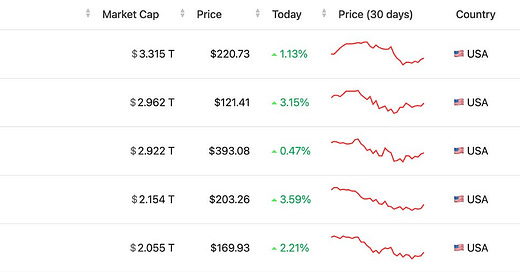














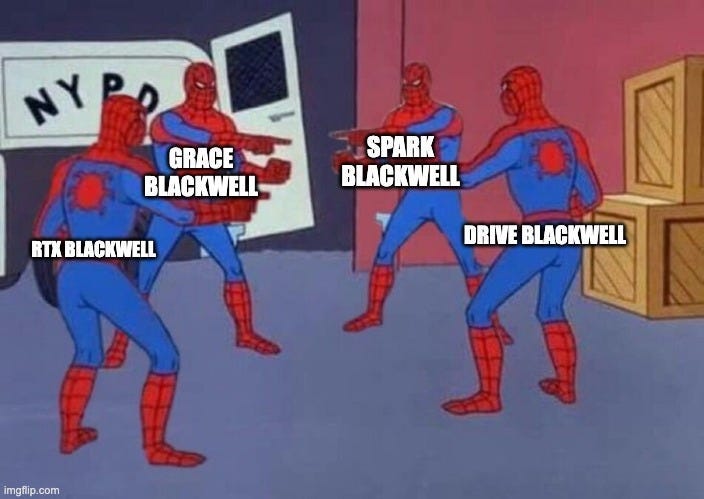


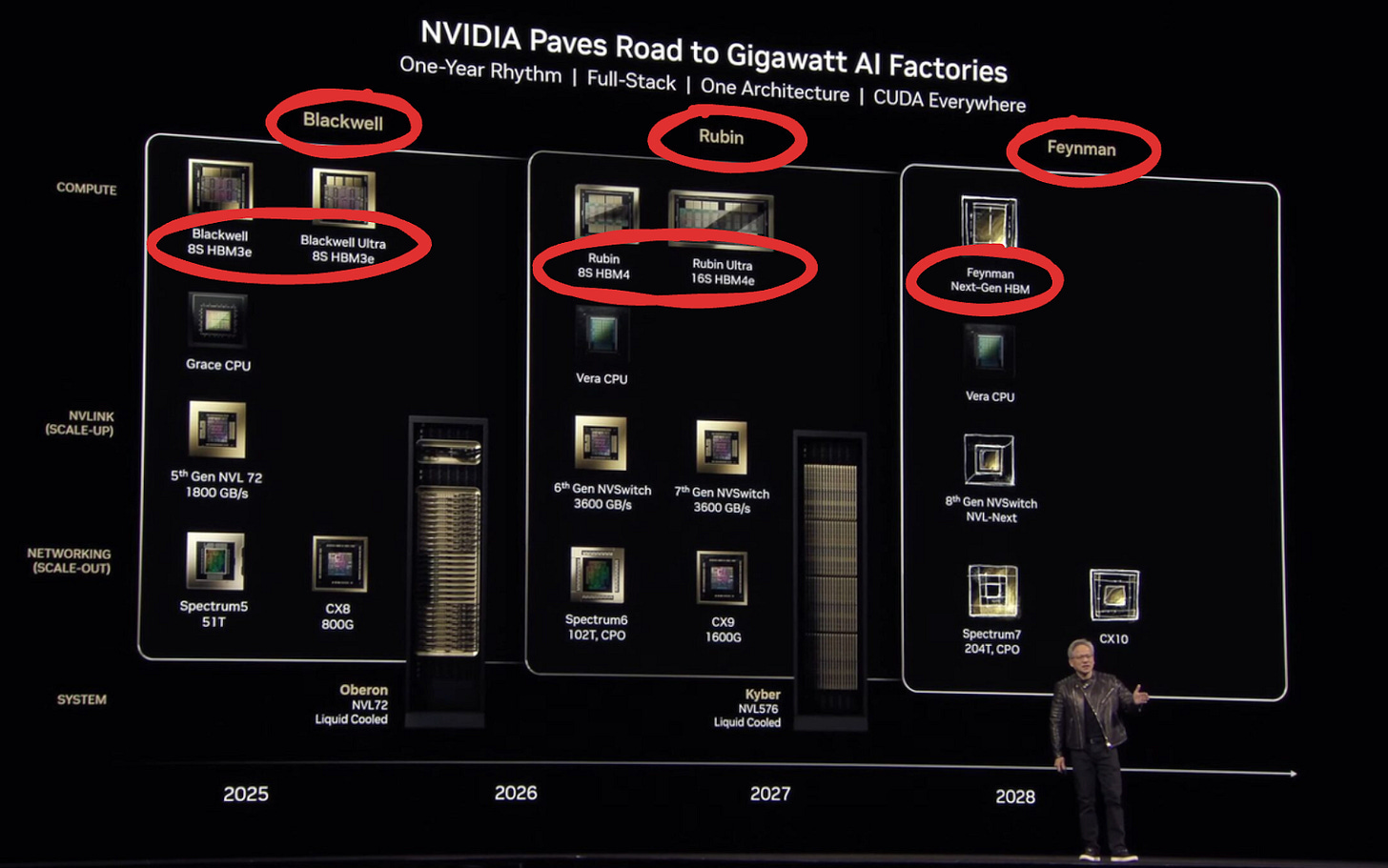
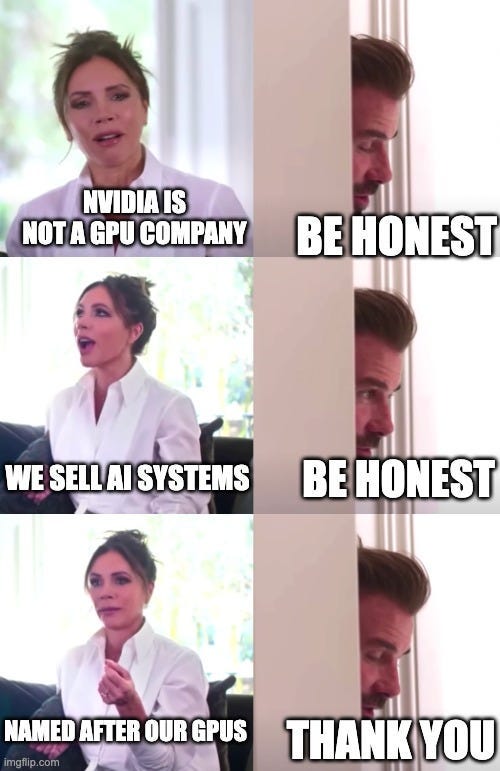


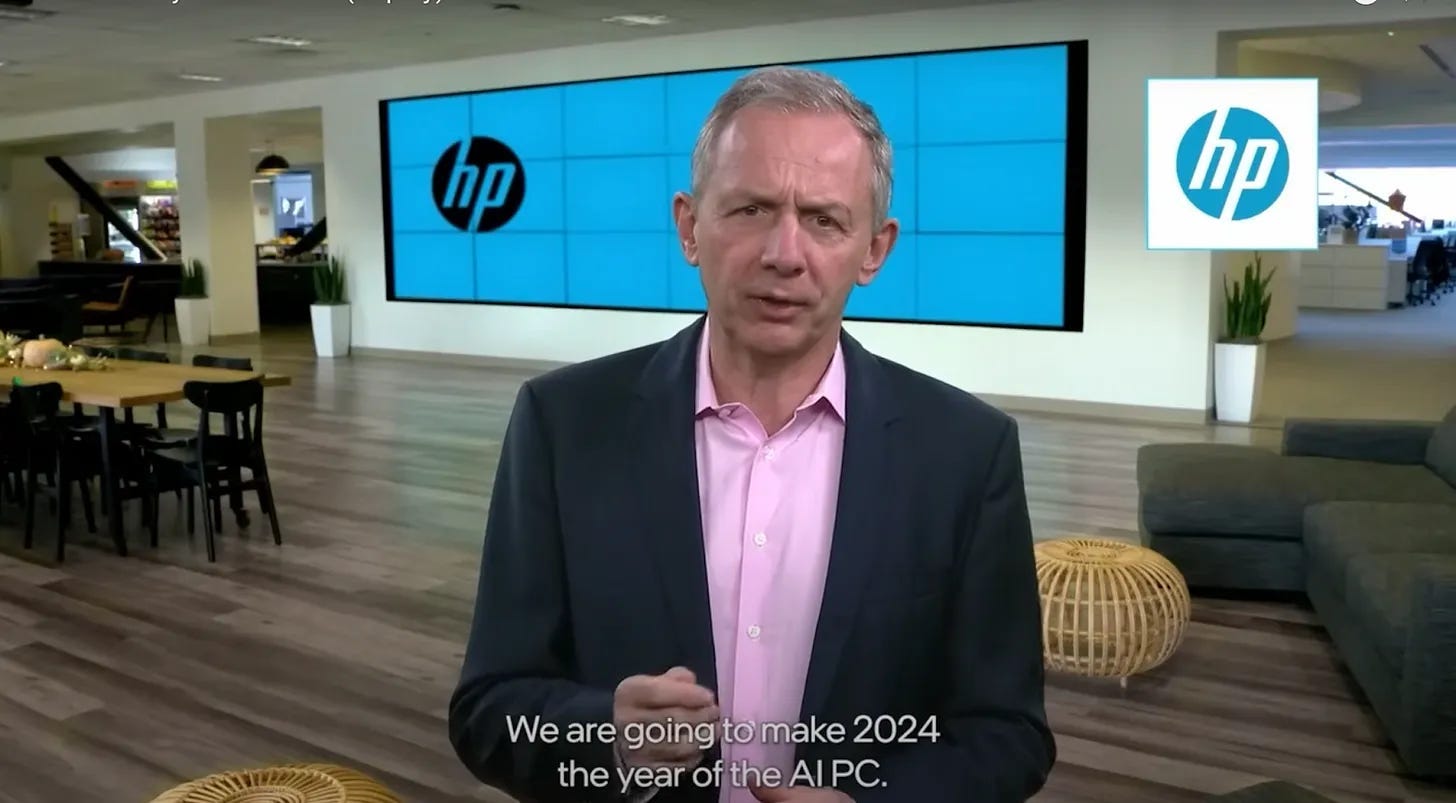

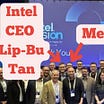
This was a very entertaining read 😅😅 It is so true that the majority really has no idea what NVIDIA does - we know that it plays a key role in the AI landscape - but what role exactly ? and we see it make the headlines when there is a market crash - but why :p? Great explanation. And it is so necessary that you called them out for not doing enough to fix the problems that majority of the population has to endure - like those long lines at the DMV.Great reminder why good storytelling is important no matter how big or small a company is.